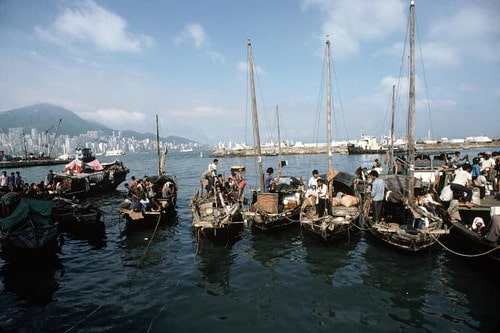
Upheaval and Migration – Part I
by Usha Alexander
[This is the ninth in a series of essays, On Climate Truth and Fiction, in which I raise questions about environmental distress, the human experience, and storytelling. It first appeared on 3 Quarks Daily. This ninth essay is divided into two parts. The eigth essay in the series, called “Views of Future Earth”, is here.]
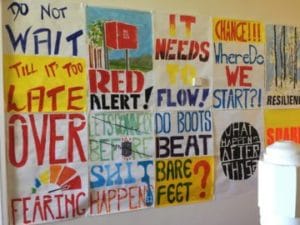
—Change. Resilience. Where do we start? I’ve got no idea. What happens after this? Listen! The answer is here!—
These words, splashed on posters, jumped out at me from images sent by a friend. The posters were part of an exhibition called We Need To Talk About Fire, hosted at an artists’ gallery along the Nowra River, about halfway between Sydney and Canberra. The Nowra River region had been hard-hit by the catastrophic Australian bushfires of 2019–20, following an unprecedented drought. Fire season in Australia is worsening as the planet warms, just as it is in the western United States, the Amazon, and Siberia. And the 2019–20 Australian season was particularly horrific, igniting a follow-on spate of depression and suicides in the area. What struck me about these posters was the raw simplicity of their messages, which ranged from forceful platitudes to agonized queries.
In their talk about these bushfires of extraordinary fury, worsened by climate change, there’s no mention of technical solutions. No demand for new wind farms or lowered carbon intensity. Instead, the posters surface what so often gets buried beneath the statistics, acronyms, and cost-benefit analyses common in our dialogs on climate and environment. They voice the thoughts of people who narrowly escaped the flames as the sky burned. People who lost pieces of their lives in an incomprehensible inferno—loved ones or homes or a quietude of mind. For me, the posters recalled the millions more, elsewhere, who might also be expressing similar feelings: Survivors of entire towns leveled by fire in the western United States, from Paradise, California in 2018, to the several communities of Detroit, Blue River, Vida, Phoenix, and Talent, Oregon, in 2020. Survivors of back-to-back typhoons Kenneth and Idai, the two most powerful cyclones ever to strike Mozambique, which hit within six weeks of one another, in March and April of 2019, fueled by rising sea surface temperatures. Survivors of typhoon Goni, the strongest recorded cyclone ever to make landfall anywhere, which hit the Philippines just days after typhoon Molave had hammered the same region, during the Covid-19 pandemic in October and November of 2020. Others too, for whom the damages and dangers of our rapidly changing planet must already feel immediate, existential, and relentless, eclipsing hopes for a return to “normalcy.”
I’m thus far fortunate to not have lived through traumatizing weather disasters. Still I felt I recognized something in those posters that talked about fire. Their words echo within my own chasms of dread, as I come to appreciate more keenly the depth, breadth, and scope of our planetary and civilizational predicament. In dwelling on these Earth-shattering matters, it seems to me, so much of what you want to imagine you know gets stripped away. You are gripped, at times, by an acute sense of disorientation, something akin to an experience I described at the start of this series, of a time I got lost in a drowning tropical deluge: alone in the dark, no light from any quarter, no solid substance in my grip, no trust in what might be real. And before you can discover what to do about such a dislocation—what new story might provide a thread for you to find your way—the raw and urgent formulations are all that’s left: Change. Resilience. Where do we start? I’ve got no idea. What happens after this? Listen! The answer is here!
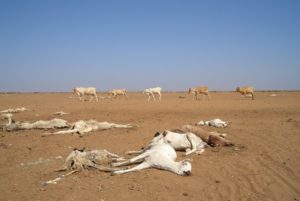
Every natural disaster is surely agonizing and disorienting. There have always been survivors of floods and earthquakes shaking their heads on the evening news, stoic as they vow to rebuild. But in the context of irreversible planetary change, of mounting and overlapping disasters—flood, fire, drought, derecho, pandemic, hurricane, avalanche—striking year after year, sometimes month after month, within the radius of one’s personal awareness and attachments, I wonder if more survivors may be feeling that it’s not just a matter of rebuilding what was lost. That the loss far exceeds the immediate calamity. That their baseline presumptions of stability may no longer be valid. That perhaps everything is not going to be alright and they will never be returning home.
So too with the survivors of slower environmental catastrophes, whose livelihoods have dried up over the past two or three decades, as agriculture falters in Central America, western Asia, and Australia. As fish catches plummet and the land sinks along Indian Ocean coastlines, or on Pacific islands like the Carteret atoll and Kiribati. The Carteret Islanders, for one, already know they must completely abandon their ancestral homeland, where dying coral reefs, overfishing by international commercial vessels, and rising seas have incapacitated their once idyllic atoll, rendering it now uninhabitable (those who remain there today are dependent upon food shipped from Bougainville, the nearest island nation, over fifty miles distant). Their relocation, most of them to Bougainville, is likely to be a death blow to the Carteret Islanders’ once self-sufficient and peaceable way of life. Their traditions of power sharing, their egalitarian economy, kinship ties and mutual obligations, skillsets and aesthetics, their very worldview was intimately tied to the landscape they had inhabited and the livelihood they had practiced for hundreds of years; it’s not clear how these cultural features will morph as they’re ported into a materially new world with new landscapes, settlement patterns, foods, livelihoods and leisure, outside influences, novel desires, and an unimagined vulnerability to poverty.
Sometimes dubbed the world’s first climate refugees, Carteret Islanders number only a couple thousand. But they will be followed in their fate by the hundred-thousand people of Kiribati, who will suffer a similar magnitude of loss. So too the Marshallese. Hundreds of thousands of refugees will accrue from the small island countries alone. Entire sustainably operating societies summarily displaced through no fault of their own, their collective and individual futures stolen from them because we, in the “developed world,” were told we could—we should!—have as much “stuff” as our hearts desired, that the Earth would provide without limit, and we wanted what we wanted.
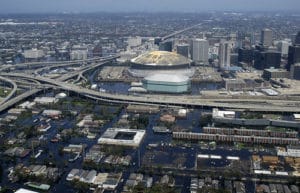
And then there are those along the eastern seaboard of the USA, millions living near low-lying shorelines, whose future stability is also uncertain. There are towns like Cameron and Creole, Louisiana, hit by five hurricanes since 2005—three of them in 2020—where more and more residents are giving up on rebuilding, opting to migrate instead. In Alaska, thousands of Indigenous people live in villages that are sinking as the permafrost thaws and the sea climbs. Living in the US, one might expect that these people will find some sort of protection. But while the wealthiest may have insurance, insurance schemes are faltering and the non-wealthy majority are unlikely to receive any restitution for lost land or plummeting home values. And what can compensate for the abandonment of multi-generational landscapes or communities and social networks that have been dispersed? For Indigenous Alaskans, their villages on the sea are essential to their way of life. There was once a hope the government could help reconstitute their villages on more solid ground. But when moving an Arctic village of four hundred people was found to cost about four hundred million USD, the idea was abandoned.
[End of Part I]
[Upheaval and Migration – Part II ] Coming soon!
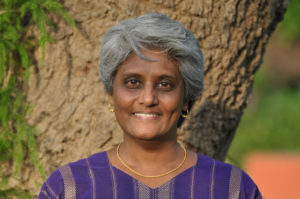
Usha Alexander was born to Indian immigrants who came to the United States in the 1950s and settled in the very small town of Pocatello, Idaho. She ran away to university at the age of 19, and later joined the US Peace Corps, where she served as a science teacher in the archipelago nation of Vanuatu. In the late 90s, Usha made her way to the San Francisco Bay Area of California, where she settled and worked for Apple Computer for many years.
Since 2013, Usha resides with her partner, writer and photographer, Namit Arora, in the National Capital Region of India. Usha has lived in four different countries and has learned to carry her home within herself, yet she frequently returns to the CA Bay Area with a certain sense of homecoming.